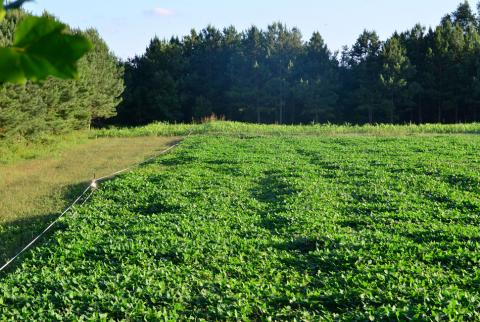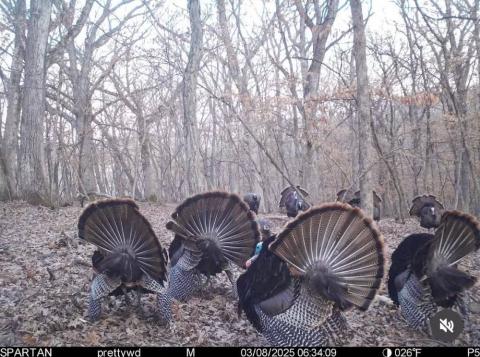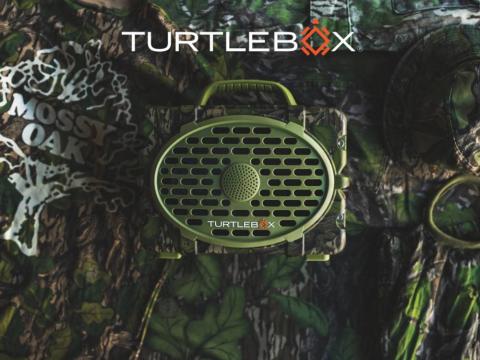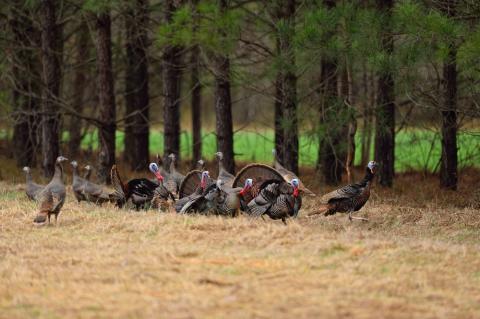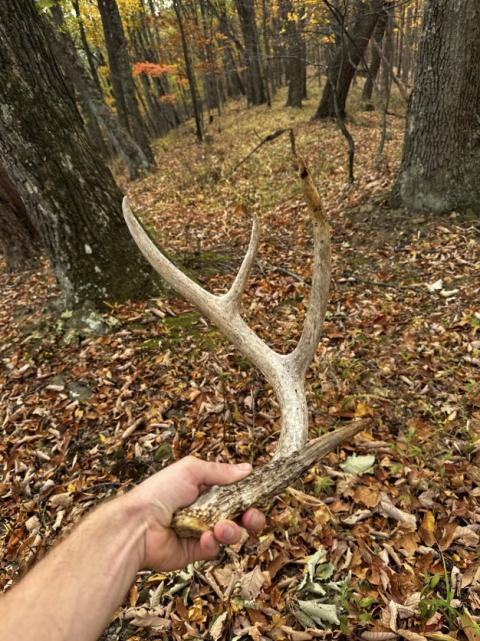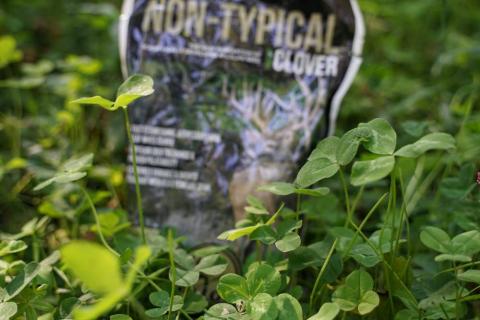Heading off on your mountain bike for the first few times can be daunting and anxiety-producing. The potential for a fall or accident looms ahead of you, as do countless hours of excitement and adrenaline rushes.
By burning through your turns, training in intervals — or using fartleks — and using a front-wheel lift successfully, you’ll be riding like a pro in no time. The first factor you need to consider is what kind of mountain bike you should be riding. Here are the different types of mountain bikes you may see on the market, as well as tried-and-true tips for building your biking skills.
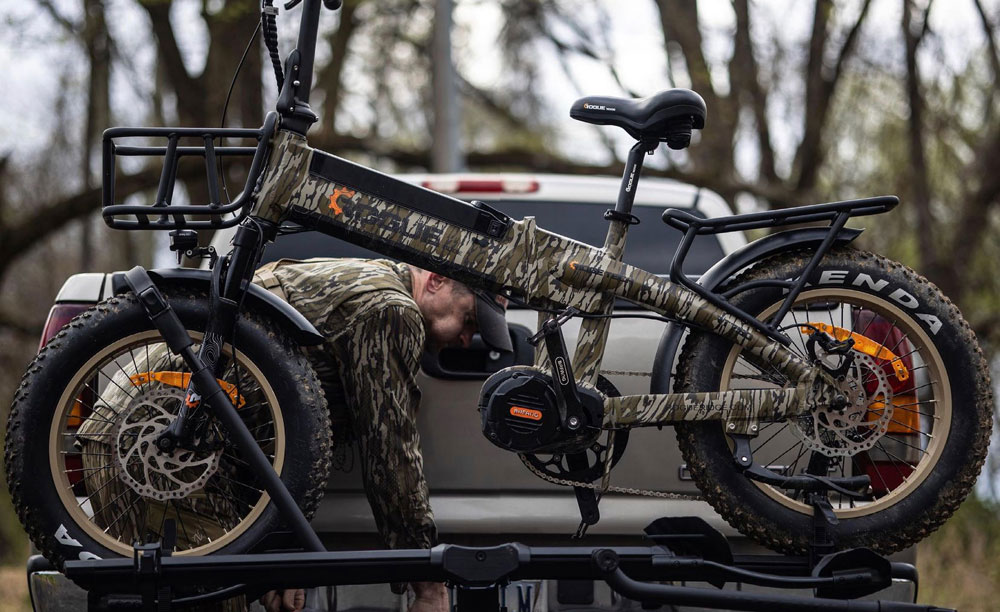
Types of Mountain Bikes
Where you’re riding will significantly affect the kind of mountain bike you invest in. The two essential considerations are suspension type and wheel diameter. Mountain bikes have either rigid, hardtail or full suspension.
Rigid
A mountain bike with a rigid frame has no suspension at all. Most of the time, mountain bike riders prefer bikes with suspension to absorb the trail’s shocks and bumps. However, if you prefer extra-wide tires, you may want a bike with rigid suspension, as the tires’ girth and the low pressure cushions most of the bumps.
Hardtail
This type of mountain bike has suspension in the front but none in the rear. A hardtail is an excellent choice for all-terrain trails and anything but very extreme downhill routes.
These bikes are less expensive than bikes with full suspension, and you can lock out the front fork suspension if you need a rigid bike. These bikes also have a complete transfer of power from the pedal stroke to the rear tire, so you can chug up steep inclines.
Full Suspension
A bike with full suspension has shock absorbers on the rear tire and suspension on the front tire. There are a few renditions of full-suspension bikes, but all of them soak up the trail’s lumps and bumps with little to no shock at all.
These bikes do bob up and down a bit, especially when you’re going uphill, so you may lose some energy. Because of this inefficiency, most full-suspension bikes can lock out the rear tire to diminish energy loss when you’re going uphill.
There are even mountain bikes with electrical components like Rogue Ridge mountain e-bikes, which will take you farther into the wilds than you’ve ever been before.
Tire Width
Tire width also affects how you ride. When you walk into any bike shop to inquire about tires, they will ask you if you want 26, 27.5 or 29 inch tires. Here are some of the key differences between these tire widths.
- 26 inches
A 26-inch tire used to be standard on mountain bikes, and many people still love this width for its maneuverability.
- 27.5 inches
These tires are a great compromise between 26 or 29 inches, as they provide the maneuverability of thinner tires but the easy-riding feel of thicker models.
- 29 inches
These are the thickest tires you can find. They glide over the roughest terrain. Wide tires may provide a lot of cushioning, but it is also hard to accelerate with them.
Once you’ve made these decisions as to suspension type and tire width, you’re ready to get out onto the twists and turns of the dirt trails with your new mountain bike, whether you’re riding on a wide-tired rigid suspension or a full suspension bike. Here are some tips and tricks that may cushion the blows of those first-time rides.
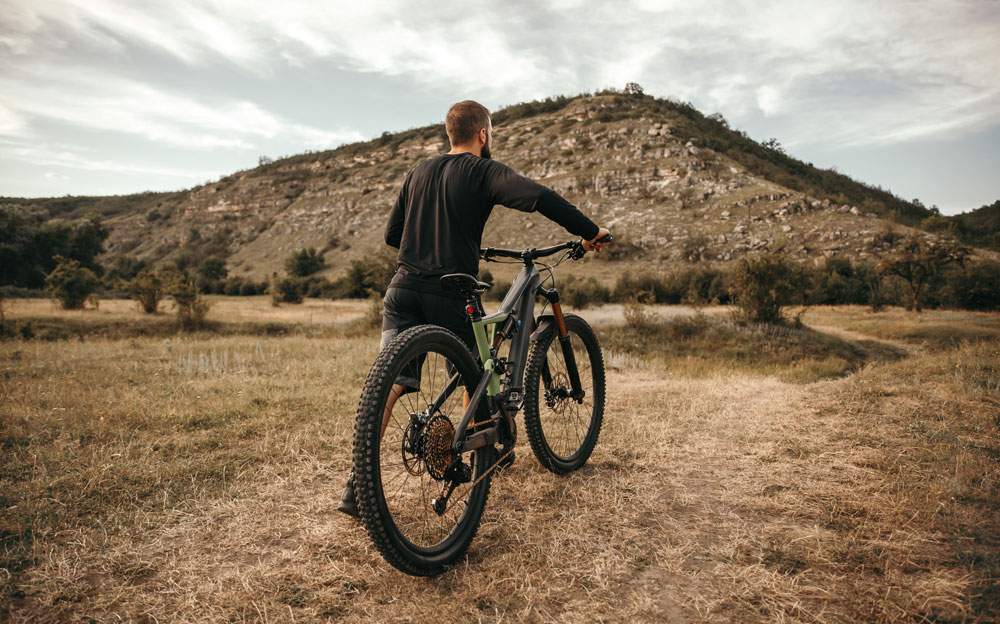
Build a Fitness Foundation
You need to have a substantial fitness base before you head out into the wilderness on your bike. Core strength, supple joints and a primed cardiovascular system are necessities for a trained rider.
Like when you’re training for hiking a substantial peak or mileage, build your foundation as you would the foundation of a house, except, instead of using bricks or cement, you use blocks of training.
Block training works similarly to High Intensity Interval Training (HIIT) but trains only a few target functional abilities. You periodically exceed your maximum physical capabilities, and then have a sufficient recovery period. The idea is to improve both muscular and cardiovascular endurance quickly so you can push harder in subsequent training sessions.
Use Intervals or Fartleks
One way to prepare yourself for the intense ons and offs of mountain biking is by employing interval training or the Swedish idea of fartlek or speed-play. Partition your ride out into segments you ride at a steady pace with bursts of intense effort at measured moments throughout your ride.
These bursts of intensity mimic the way you will have to use considerable strength and energy by riding up and over hills, tackling crevices or nosing your way over stacked logs when you’re on the trails.
Improve Your Cornering
Going around corners is a necessary skill in mountain bike technique. You need to be able to corner well if you want to avoid any crashes. Cornering is the number one place where riders lose energy on their rides, and it is a skill you can continually improve.
If you can hold on to your momentum as you travel through the corner, you don’t have to lose any energy. Set up for the curve early, and assume a wide crouch on equally weighted pedals. When you hit the turn, lean the bike, not your body, and it will swing you around the corner.
Glide Over Rocks and Roots
Another way to hone your mountain riding skills is by perfecting how you take on roots and rocks while you’re on the trail. Most of the obstacles you run into on the route can be easily glided over with some momentum and good form. With your elbows out and springy ankles and knees, come at the obstruction at a jogging pace.
Make sure not to look down when you’re going over the larger bumps; focus on something far ahead and let your peripheral vision hold the line. Keep your hands light on the handlebars, as you don’t want the front tire to catch on anything and pull you down.
Along with coolers and tents in your family camping gear, bring a tire pump and your new mountain bike so you can try out your new skills on the next family trip.
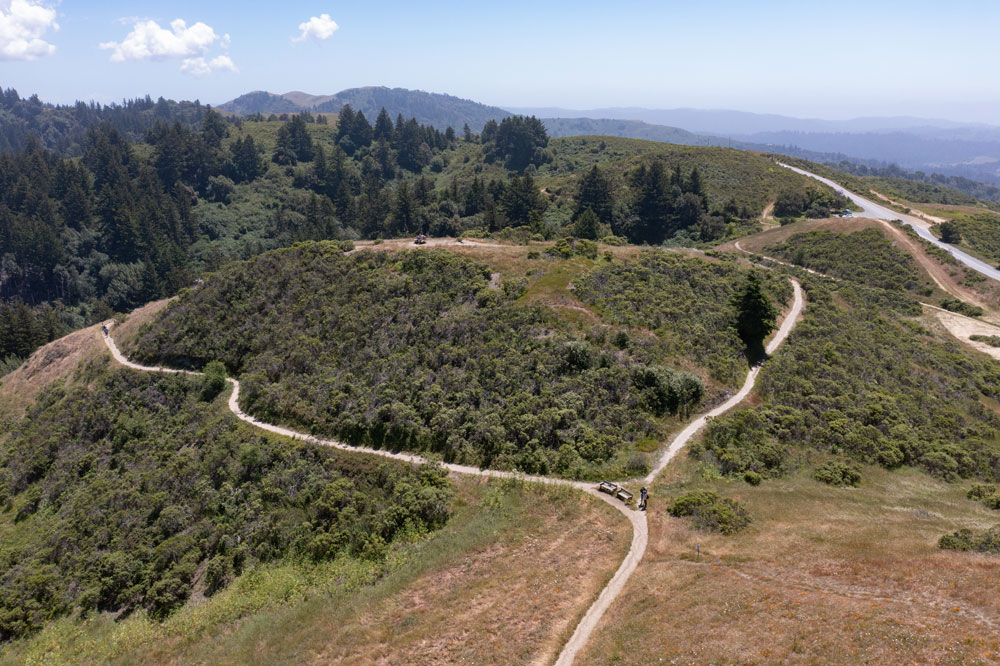
The Final Word
When you’re taking to the trails on your mountain bike, the first few times may cause you some anxiety. With a couple of tips and tricks, you will feel more confident in your abilities.
If you equip yourself with the proper knowledge, you’ll automatically know what to do when you’re coming up to your first corner. With the right kind of bike and some good training, you’ll be leveling up in no time.
Outfit yourself for your next mountain biking adventure with Mossy Oak. Our high-performance outdoor gear offers protection against the elements, as well as outstanding breathability to keep you cool and dry when you hit the trail.














